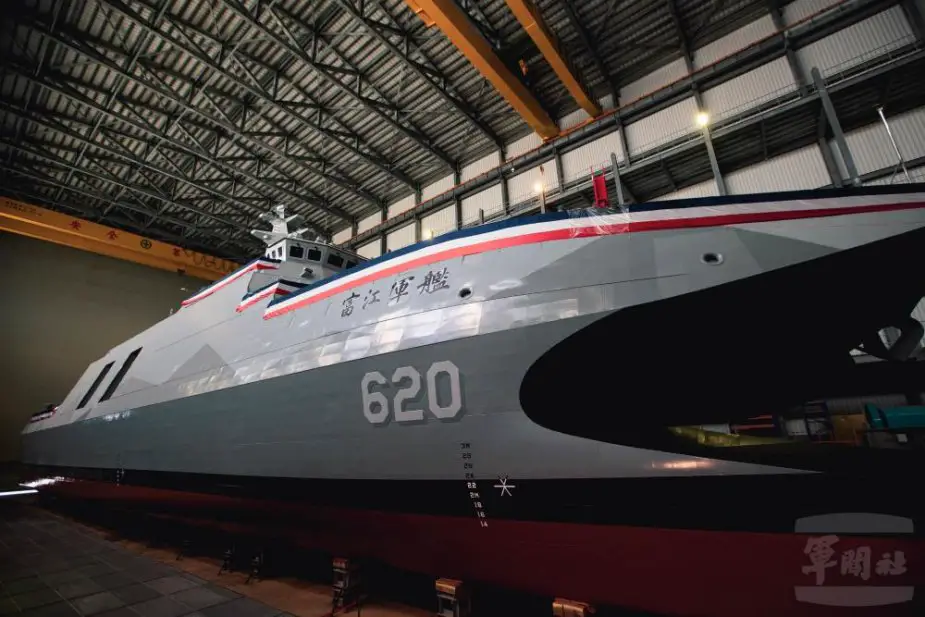Breaking news
Taiwan wants 10 additionnal Tuo Chiang class corvettes.
According to information published by Taiwan News on September 26, 2022, Taiwan’s Ministry of National Defense (MND) has announced plans to build 10 more Tuo Chiang-class corvettes.
Follow Navy Recognition on Google News at this link
 Taiwanese Tuo Chiang class corvette Fu Chiang (Picture source: Taiwanese government)
Taiwanese Tuo Chiang class corvette Fu Chiang (Picture source: Taiwanese government)
The Tuo Chiang-class corvette is a Taiwanese-designed class of fast (up to 45 knots, 83 km/h, 52 mph) and stealthy multi-mission corvettes built for the Republic of China (Taiwan) Navy.
It is designed to counter the numerous and increasingly sophisticated People's Liberation Army Navy ships by utilizing hit-and-run tactics, and thus featured clean upper structure design with very few extrusions to reduce radar signature, pre-cooled engine exhaust to reduce infrared signature, and a reduced visual signature to reduce chance of detection.
The program was announced by the Republic of China (Taiwan) Ministry of National Defense (MND) on 12 April 2010. It was developed by the Naval Shipbuilding Center in Kaohsiung.
The Tuo Chiang class was developed to address common weakness of traditional small warships such as patrol craft and corvettes not fit for extended periods of time in rough seas around Taiwan Island.
The ship is a wave-piercing catamaran design which is 60.4 metres (198 ft) long, 14 metres (46 ft) wide and carries a crew of 41. It is capable of a top speed of 40 knots and a range of 2,000 nautical miles (3,700 km; 2,300 mi).
It is armed with eight subsonic Hsiung Feng II and eight supersonic Hsiung Feng III anti-ship missiles launchers, a Phalanx Close-In Weapons System, and a 76 mm (3 in) main gun. The ship can operate up to sea state 7 in waves up to 20–30 ft (6.1–9.1 m) high.
Taiwan Security Analysis Center (TAISAC) stated that the ship features stealth technologies to minimize radar detection, a combat system that includes a distributed-architecture combat direction system known as "Taiwan Aegis" developed by the National Chung-Shan Institute of Science and Technology and an indigenous search/track and fire-control radar and electro-optical director.
The ship increases its survivability in naval warfare by utilizing advanced stealth technology and low radar cross section (RCS), which makes it less detectable by radar and allows it to be obscured by background radar noise when operating closer to the coastline.


























